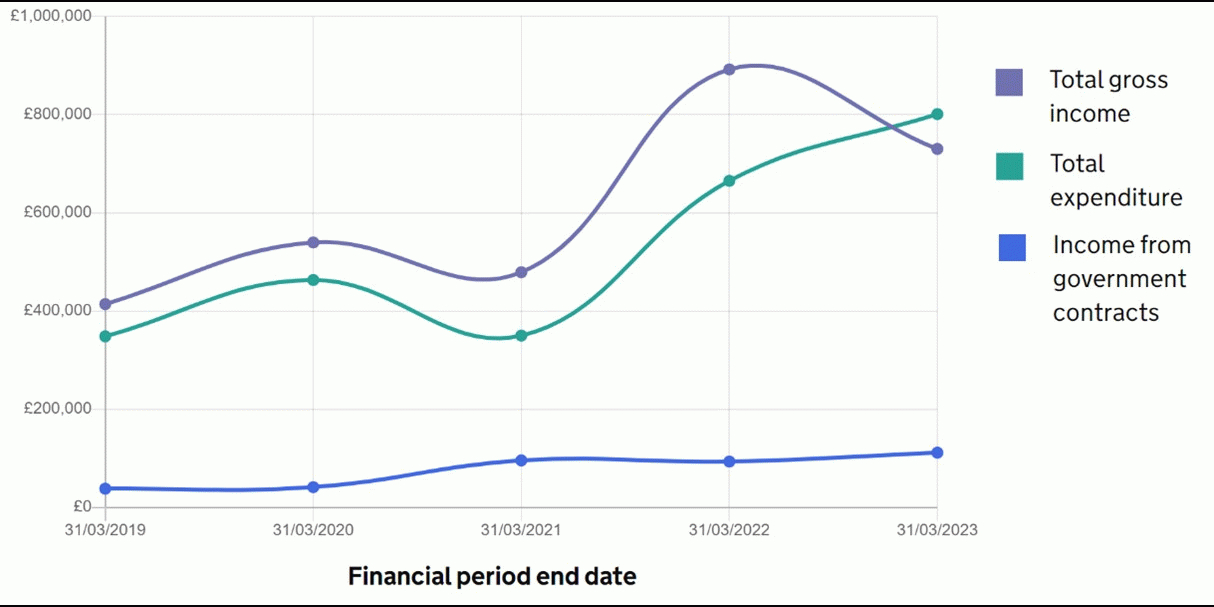
Your radar for grant funding and charity relationships

A vital aspect of running a charity is keeping on top of the financials. This might be monitoring donations, managing expenditure or maintaining cash flow. All of these are relevant for the day-to-day running of the organisation, but when it comes to financial sustainability and planning for the future, it can also be helpful to think about trends over time.
The good news is that you do not need to be an accountant or a data analyst to get access to the financial trends of your charity. The Charity Commission publishes an interactive five-year financial history for charities on their website. An example of one such charity is shown in the image accompanying this article.
At the simplest level, this trend data can be used to tell the story of a charity over time. In this case, the charity is steadily growing, so it might be useful to understand what strategic decisions have led to this growth to see if this can be replicated in the future. This might also be useful evidence to provide to potential funders.
However, in this case the charity’s expenditure is also growing as its income grows, with expenditure exceeding income in the most recent set of submitted accounts. Is this a problem? What will happen in 2024? This is where the trends can help again. By moving from a descriptive mindset to a predictive mindset, the trends (with context) can help us to envisage what might happen next. In practical terms, this could influence financial behaviours to make a charity more sustainable.
A car is a useful analogy when thinking about moving from descriptive to predictive. Descriptive is akin to looking in the rear-view mirror, whilst predictive is more like looking through the windscreen at what is coming ahead, so you can act accordingly. The widespread use of artificial intelligence can help here too by providing predictions based on the trends. However, it can go further still by suggesting what actions you might take. In effect, the AI moves us from predictive to prescriptive. Or, extending the car analogy, we end up with a Sat-Nav telling us where to go next.
Reflection Questions